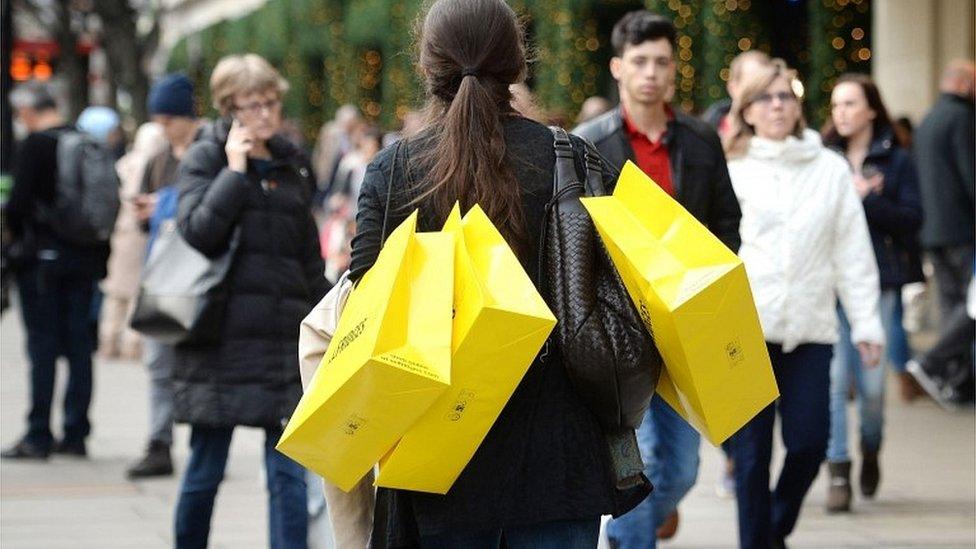UK unemployment in further fall
- Published
- comments

UK unemployment fell slightly to 1.62 million in the three months to October, according to the Office for National Statistics (ONS).
It meant the unemployment rate held steady at 4.8% in the period, remaining at an 11-year low.
Average weekly earnings excluding bonuses rose by 2.6% - a slight increase on the previous month.
But economists warned there were signs the labour market had started to "cool off" since the Brexit vote.
In total, there were 31.76 million people in work, which was "slightly down on the record set recently", said ONS senior statistician David Freeman.
"The labour market appears to have flattened off in recent months," he said.
Fewer people looked for work, leading to lower unemployment but also a rise in "economic inactivity", which measures people without a job who are not seeking or available to work.
There were 8.91 million people of working age who were economically inactive - 76,000 higher than in the previous period.
"Today's data provides the clearest evidence yet that the jobs market has started to cool off since the Brexit vote," said John Hawksworth, chief economist at PwC.
The number of people in work was "flat", whereas before the 23 June referendum it had been "rising strongly", he said.
The Bank of England and other economists have forecast that unemployment is set to rise amid uncertainty over the UK's withdrawal from the EU.

Analysis: Jonty Bloom, business correspondent
Although there is nothing too dramatic about these monthly figures, there does seem to be a trend developing. As the ONS says, "the labour market appears to have flattened off in recent months". That means jobs are not being created at the same impressive rate recorded in recent years.
While unemployment is down by a small amount, there have also been small increases in the number of people claiming unemployment benefit and a fall in the number in work. That has been possible because of a rise in what is called economic inactivity, which covers large numbers of people including those who are ill, have taken early retirement, or just not looking for a job.
The fact that average earnings are increasing by 2.6% a year also suggests that the labour market is tightening - forcing companies to pay more to attract or keep staff.

Work and Pensions Secretary Damian Green said it was "too early" to conclude Brexit uncertainty was affecting the labour market.
"We are in a broadly flat situation, but it's a flat situation at a very low level of unemployment," he told the BBC.
Going into next year's Brexit negotiations, "it's extremely encouraging that our labour market is so resilient", he added.
The UK has one of the lowest unemployment rates in the EU, behind only Germany and the Czech Republic.
That was helped by more women in work - rising to a record high of nearly 15 million - and the addition of 129,000 self-employed workers to 4.75 million, according to the ONS figures.
'Raise eyebrows'
Surveys continue to indicate more UK jobs will be created and suggest "any further deterioration in the labour market" will not be severe, said Paul Hollingsworth, UK economist at Capital Economics.
"The combination of the weakest employment data since mid-2015 and the fastest wage gains since June will raise eyebrows, but it probably is not as alarming as it might seem," said Ian Shepherdson, chief economist at Pantheon Macroeconomics.
"The employment data are very erratic and sudden swings, in either direction, are not unusual."
The figures are based on the Labour Force Survey, in which the ONS speaks to about 40,000 households every quarter. That is a very large survey, but it still means the figures are not precise.
The ONS is 95% confident that the figure of a 16,000 fall in unemployment is accurate give or take 81,000. That means that the fall in unemployment is not statistically significant.
- Published14 December 2016
- Published12 December 2016
